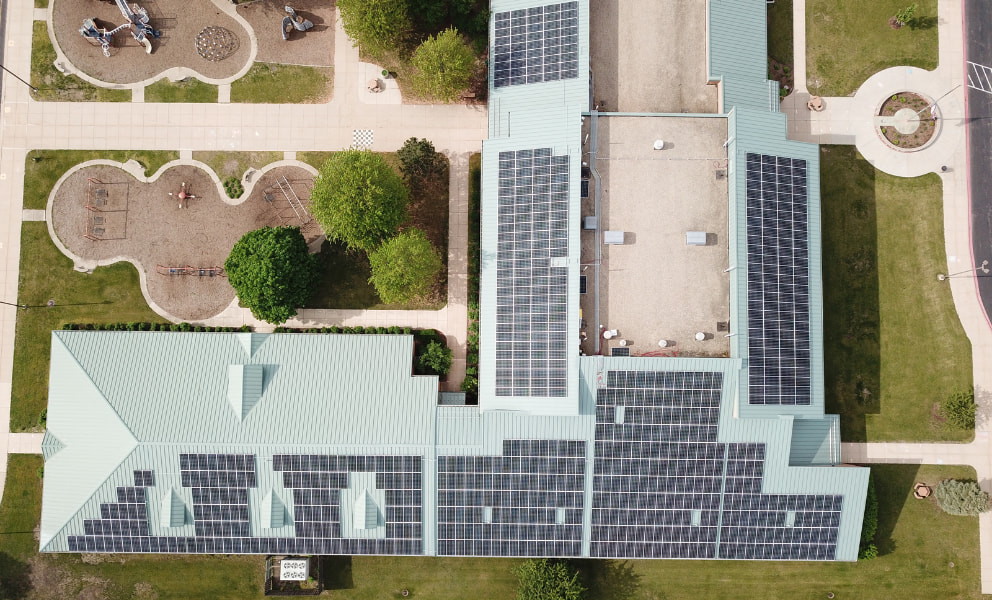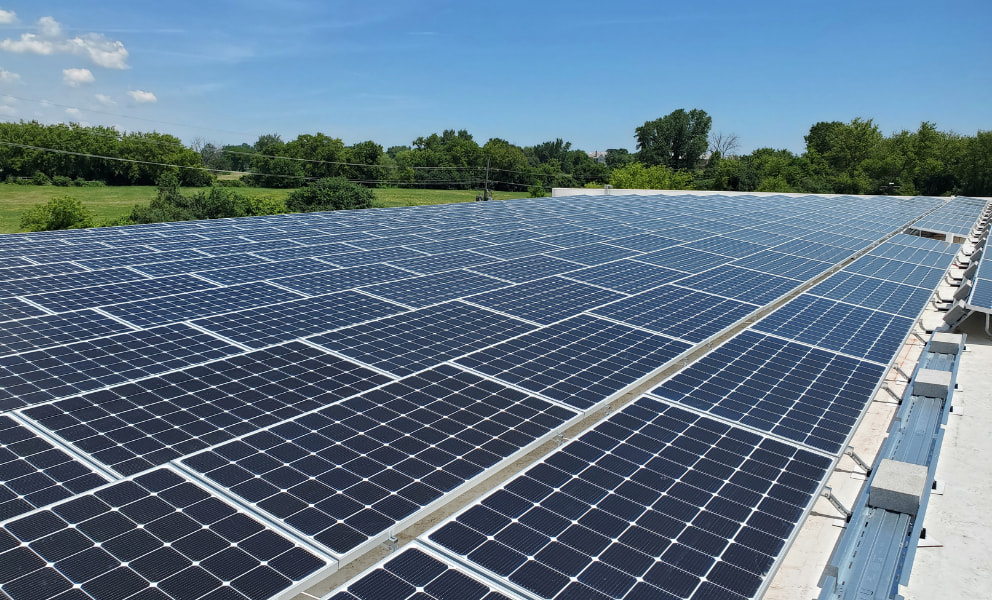Quick Facts
- Topics
- Energy Services
Application | Fuel Source | Benefits | Drawbacks |
Standby Power
| Diesel fuel | Highly proven, reliable, quick start as standby. | Uses fossil fuels, which may contribute to increased emissions. |
Application | Fuel Source | Benefits | Drawbacks |
Standby power Simple cycle (power only) Base Load or Peaking Combined Cycle (combined heat and power) - Base Load | Diesel fuel + natural gas | Benefit of quick start (diesel) Lower emissions and higher efficiency than 100% diesel gensets Can be installed as CHP
| Uses fossil fuel, still utilizes diesel fuel which generates very high emissions |
Application | Fuel Source | Benefits | Drawbacks |
Standby power Simple cycle (power only) Base Load or Peaking Combined Cycle (combined heat and power) - Base Load | Natural gas | Highly proven, reliable Can be used as a cost effective baseload, load following and peaking unit Lower emissions and higher efficiency than diesel gensets Can be installed as CHP High CHP efficiency for hot water or combined hot water and steam (<50% steam) Some units may be converted to clean H2 fuel as the price of H2 falls over time | Uses fossil fuel, equipment can be installed with emissions reduction equipment |
Application | Fuel Source | Benefits | Drawbacks |
Simple Cycle (power only) - Base Load or Peaking Combined Cycle (combined heat and power) - Base Load | Gas or liquid fuel, typically high pressure natural gas | Efficient, lower maintenance than gensets Designed for base load, peaking and load following applications High CHP efficiency, for applications with steam requirements. High Supplemental Duct Fire efficiencies (near 100% LHV). | Uses fossil fuel, equipment can be installed with emissions reduction equipment Higher first cost than Gensets, requires high pressure fuel |
Application | Fuel Source | Benefits | Drawbacks |
Simple Cycle (power only) - Base Load or Peaking Combined Cycle (combined heat and power) - Base Load | High pressure natural gas | Compact, pre-packaged Low emissions Modular for moving applications | Less efficient than combustion engines and larger combustion turbines Limited lifecycle applications |
Application | Fuel Source | Benefits | Drawbacks |
Simple Cycle (power only) - Base Load or Peaking Combined Cycle (combined heat and power) - Base Load | Hydrogen (potentially produced from natural gas or propane) | One of the cleanest forms of energy Efficient, quiet Modular | Expensive, low overall efficiency |
Application | Fuel Source | Benefits | Drawbacks |
Using gensets, turbines or fuel cells as listed above | Waste heat from power generation, exhaust or engine cooling is converted to useful heat in the form of steam, hot water or chilled water through hot water, steam or HW/Steam absorption chillers | Recovered waste heat reduces the heat that must be generated by conventional equipment including boilers and chillers Reduces emissions and improves efficiency | Only applicable for locations where the electrical AND thermal loads are consistent for more than 5,000 hours per year |
Application | Fuel Source | Benefits | Drawbacks |
As-available generation Can be coupled with battery storage and utilized as baseload or peaking power | Sunlight | Renewable, no emissions Modular, minimal maintenance Can be used in remote applications, at utility scale, and in transport applications | Regions with low or highly variable sunlight may be less suitable |
Application | Fuel Source | Benefits | Drawbacks |
As-available generation Can be coupled with battery storage and utilized as baseload or peaking power | Wind | Renewable Can be used in remote power systems, small scale residential, or at utility scale | Regions with low or highly variable wind may be less suitable |
Thermal Energy Storage / Thermal Battery (Ice Storage or Stratified Chilled Water) |
Electrochemical Battery Storage (most common form of storage) |
Uninterrupted Power Supply (UPS) |
Flywheels |
Superconducting Magnetic Energy Storage (SMES) |
Information above derived from: Using Distributed Energy Resources: A How-To Guide for Federal Facility Managers, https://www.nrel.gov/docs/fy02osti/31570.pdf.
Depending on an organization’s specific goals, one or more of these technologies may be used together to supply and/or store electricity. As building infrastructure is decarbonized through electrification and critical equipment becomes increasingly more electrified, using creative ways to generate cleaner, less expensive energy and harness wasted or renewable energy to enable grid independence will be important for reliable, resilient operations.
Not all electric grids are created equal.
Depending on your location, the energy sources used to create electricity may be more or less clean and more or less expensive. Moving toward electrified equipment may not improve the sustainability or cost-effectiveness of your operation if the grid uses carbon-intensive or expensive energy sources to produce electricity. Distributed energy resources can provide a means for facilities to manage generation assets and fuel sources, whether the goal is to minimize the carbon footprint, mitigate costs, or maximize resilience.
Considering how to Incorporate Distributed Energy Resources in your Operation?
If you’re considering how to incorporate DERs into your operation to help improve cost reduction, advance sustainability initiatives, or enhance resilience, the first step is to work with a trusted energy services company to help understand your operation. Through an analysis of your building and environment, and by reviewing utility charges and assessing demand patterns, it will be possible to determine the opportunities that may be available for power generation, and how to appropriately right-size and optimize a solution for your unique application.
The second step is to identify a funding or financing solution that works best for you, while considering how to incorporate tax incentives, utility rebates and credits, and Renewable Energy Certificates (RECs). Legislation like the Inflation Reduction Act has provided or expanded a variety of incentives for DER technologies like fuel cells, solar, and thermal energy storage , and local implementation of government programs may further improve the attractiveness of pursuing a DER solution.
Lastly, in conjunction with a funding solution, you’ll want to identify procurement and implementation options that meet your needs, such as Energy Service Agreements (ESAs), Power Purchase Agreements (PPAs), or Energy Savings Performance Contracting (ESPC). These holistic programs can streamline the process to implement solution to relieve the burden of having to manage complex project variables. They may also support guaranteed energy rates or energy savings, or eliminate the need for upfront capital expenditure to begin development.
Want to learn more about DERs?
Case Studies in Renewable Energy and DERs
-
 Kaneland Community Unit School District
Kaneland Community Unit School DistrictKaneland Community Unit School District Creates More Sustainable Operations through a Power Purchase Agreement (PPA) with Trane
December 21, 2022
-
 The State of New Mexico's “State Buildings Green Energy Project"
The State of New Mexico's “State Buildings Green Energy Project"Modernizing 32 state-owned buildings with ultra-efficient HVAC systems, intelligent building controls and renewable distributed energy resources enhances comfort while accelerating the State’s climate action plans and economic goals.
November 01, 2022
-
 Vernon Hills Park District
Vernon Hills Park DistrictVernon Hills Park District Improves Sustainability and Reduces Energy Spend through a Power Purchase Agreement (PPA) with Trane
October 26, 2022
